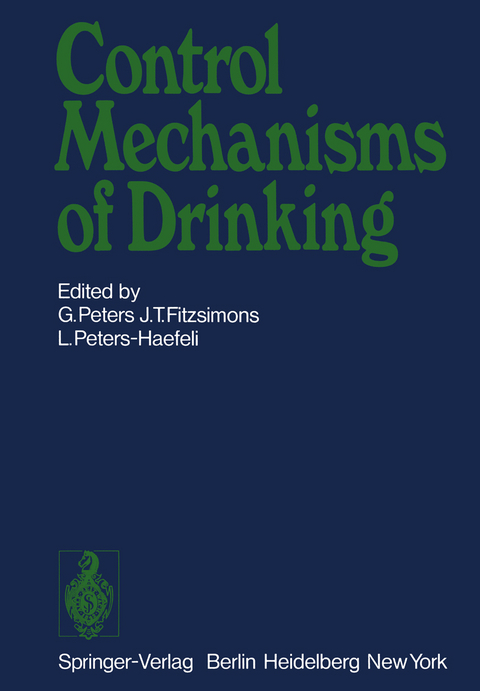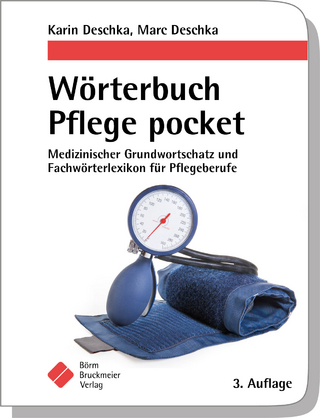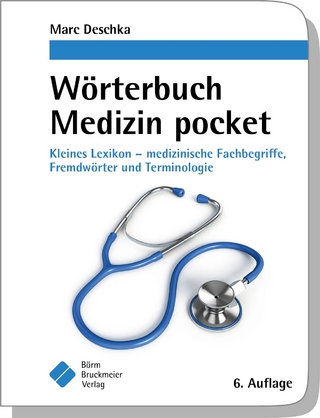
Control Mechanisms of Drinking
Springer Berlin (Verlag)
978-3-642-61909-0 (ISBN)
Section 1. Introduction.- Thirst and Sodium Appetite in the Regulation of the Body Fluids.- Section 2. Oropharyngeal and Gastric Influences in Drinking.- Lingual Stimulation and Water Intake.- Systemic Versus Oral and Gastrointestinal Metering of Fluid Intake.- Reduction of Saline Intake in Adrenalectomized Rats during Chronic Intragastric Infusions of Saline.- Section 3. Vasopressin and Drinking.- Mechanisms of Hypovolaemic Thirst and Interactions between Hypovolaemia, Hyperosmolality and the Antidiuretic System.- A Radioimmunoassay for Plasma Antidiuretic Hormone and Its Application in a Case of Hypopituitarism Associated with a Loss of Thirst.- Studies on Drinking-Feeding Interactions in Rats with Hereditary Hypothalamic Diabetes Insipidus.- Section 4. Comparative Aspects of the Regulation of Water Intake.- Cellular Dehydration as a Stimulus to Drinking in the Common Iguana, Iguana Iguana.- Section 5. Catecholaminergic Mechanisms and Peripheral Aspects of the Renin-Angiotensin System in Drinking.- Brain Catecholamines and Thirst.- Noradrenergic and Dopaminergic Influences on Thirst.- The Effects of Angiotensin II, Renin and Isoprenaline on Drinking in the Dog.- The Elevation of Endogenous Angiotensin and Thirst in the Dog.- Evidence against the Postulated Role of the Renin-Angiotensin System in Putative Renin-Dependent Drinking Responses.- Relationships between Increase in Plasma Renin Activity and Drinking Following Different Types of Dipsogenic Stimuli.- Drinking Induced by Direct or Indirect Stimulation of Beta-Receptors: Evidence for Involvement of the Renin-Angiotensin System.- Section 6. Central Mechanisms in ReninAngiotensin-Induced Drinking.- Renin, Angiotensin and Drinking.- The Mechanism of Thirst-Induction by Intrahypothalamic Renin.- Angiotensin as Dipsogen.- The Role of the Cerebral Ventricular System in Angiotensin-Induced Thirst.- Subfornical Organ Involvement in Angiotensin-Induced Drinking.- Evidence that the Lateral Hypothalamus and Midbrain Participate in the Drinking Response Elicited by Intracranial Angiotensin.- Angiotensin-Induced Drinking in the Cat.- Section 7. Salt Appetite.- Central Mediation of Water and Sodium Intake: A Dual Role for Angiotensin?.- Conditioned and Pseudoconditioned Thirst and Sodium Appetite.- Thirst and Salt Appetite in Experimental Renal Hypertension of Rats.- Section 8. Other Aspects of Thirst.- Classical Conditioning of Consumatory Behaviour.- The Chemical and Behavioural Specificity of Cholinergic Stimulation of the Tractus Diagonalis.- Increased Drinking in Rats After Isoniazid Withdrawal.- Section 9. Conclusions.- Summary and Comment.- Outlook.- Author Index.
| Erscheint lt. Verlag | 3.3.2012 |
|---|---|
| Zusatzinfo | XIV, 214 p. |
| Verlagsort | Berlin |
| Sprache | englisch |
| Maße | 170 x 244 mm |
| Gewicht | 407 g |
| Themenwelt | Medizin / Pharmazie ► Allgemeines / Lexika |
| Schlagworte | brain • Catecholamines • Control • dopamine • Neurotransmitter • Research • Water |
| ISBN-10 | 3-642-61909-6 / 3642619096 |
| ISBN-13 | 978-3-642-61909-0 / 9783642619090 |
| Zustand | Neuware |
| Haben Sie eine Frage zum Produkt? |
aus dem Bereich


